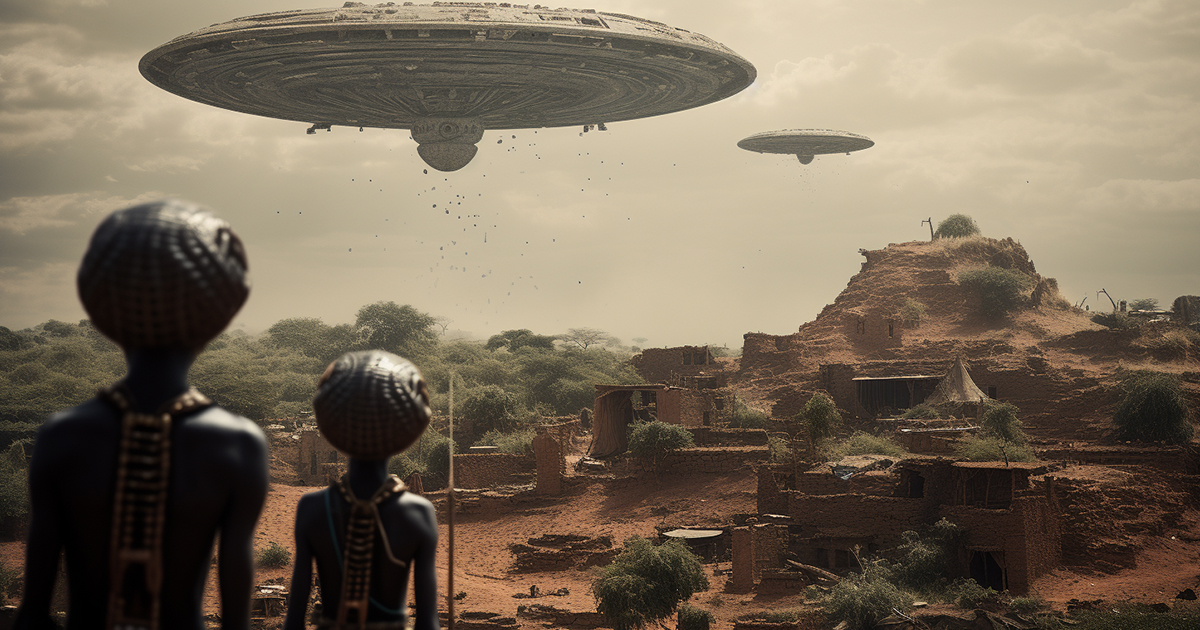In the vast and enigmatic landscapes of Mali, Africa, back in 1931, an intrepid French anthropologist by the name of Marcel Griaule embarked on an expedition that would forever change our understanding of ancient cultures.
His quest led him to the mysterious Dogon tribe, a people whose customs and beliefs held a captivating allure. What transpired during his encounters with the Dogon would give rise to profound questions about the origins of their knowledge and its celestial connection.
The legends of the Dogon, as documented by Griaule, were nothing short of astonishing. Their tales spoke of otherworldly beings, the Nommo, who descended from the heavens to Earth. These Nommo, described as mermaid- or merman-like entities, imparted a wealth of wisdom encompassing astronomy, mathematics, and science to the ancient tribe.
The Dogon firmly believed that these Nommo were extraterrestrial deities, their arrival on Earth marked by a cataclysmic event known as the “Day of the Fish.”
What intrigued Griaule and astounded the global community, however, wasn’t solely the Dogon’s legends but rather the origin of these amphibious gods. The Dogon asserted that the Nommo hailed from a distant star system, a revelation that left both Griaule and the world perplexed.

The star they referred to was none other than Sirius B, a celestial body not discovered by Earth’s astronomers until 1862, long after the Dogon claimed knowledge of its existence.
The intricacies of this revelation beg the question: How did the Dogon acquire such astronomical insight? Sirius A, the brighter counterpart of the Sirius system, had indeed been known to various ancient civilizations, including the Greeks, Persians, and Egyptians.
Some even suggest that the Egyptians aligned their pyramids with Orion’s belt, pointing to Sirius A. However, Sirius B, an invisible companion star, remained beyond the reach of unaided human vision.
The perplexing aspect of the Dogon’s knowledge lies in their awareness of the existence of Sirius B, which raises intriguing possibilities. Could the Dogon have possessed advanced technology in the past? Alternatively, could there be a more profound explanation for their cosmic wisdom?
The depth of the Dogon’s knowledge about the Sirius system is remarkable. They accurately described the orbits of both stars, the density and advanced age of Sirius B, and even the size and rotation of the brighter Sirius A. The sheer precision of their information defies conventional understanding.
One hypothesis suggests extraterrestrial intervention as a potential source of the Dogon’s knowledge. Could it be that beings from beyond our world shared their celestial insights with this ancient tribe? While this theory may seem far-fetched, it aligns remarkably well with the precision of the Dogon’s knowledge.
Yet, the mystery deepens when we consider whether the Dogon were the sole recipients of such cosmic wisdom. Legends of aquatic beings bestowing knowledge upon humanity span across cultures, from ancient Hindus to Greeks.
The common thread of these tales further fuels our curiosity about the possibility of a universal encounter with enigmatic beings.
Video:
In essence, the Dogon tribe serves as a captivating enigma, inviting us to peer into the depths of human history and cosmic wonder. Their remarkable understanding of the Sirius system challenges our conventional narratives and beckons us to explore the boundaries of what we think we know about ancient civilizations and their cosmic connections.
As we journey through the annals of history and the cosmos, the mysteries of the Dogon continue to captivate our imagination, reminding us that there are still untold stories waiting to be unearthed in the tapestry of our world’s ancient past.

16 thoughts on “Decoding the Mysteries of the Dogon Tribe: Guardians of Cosmic Knowledge”
Comments are closed.